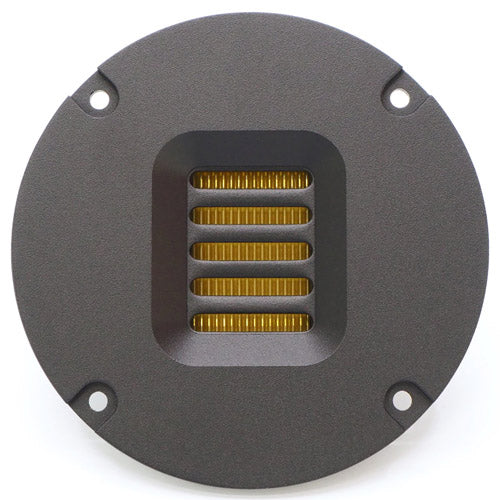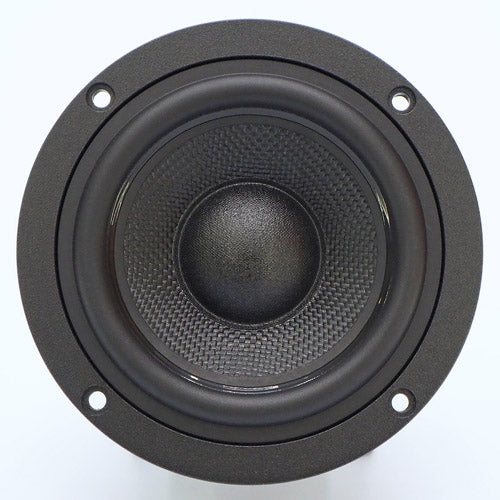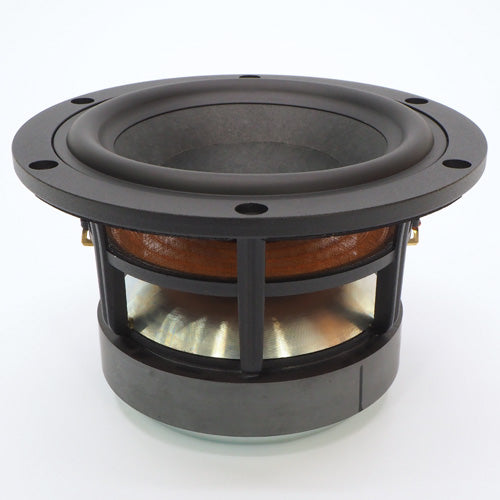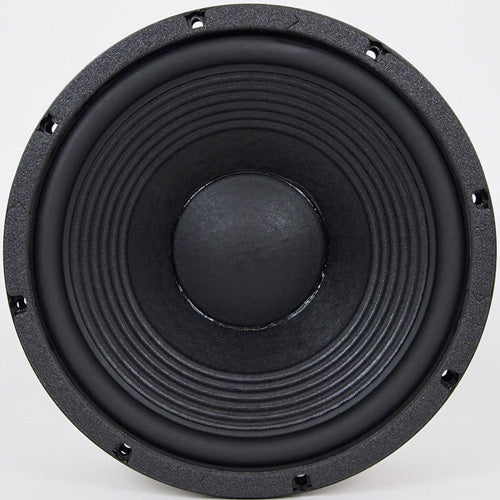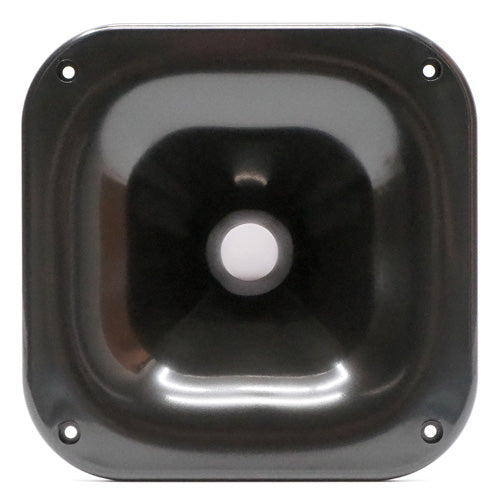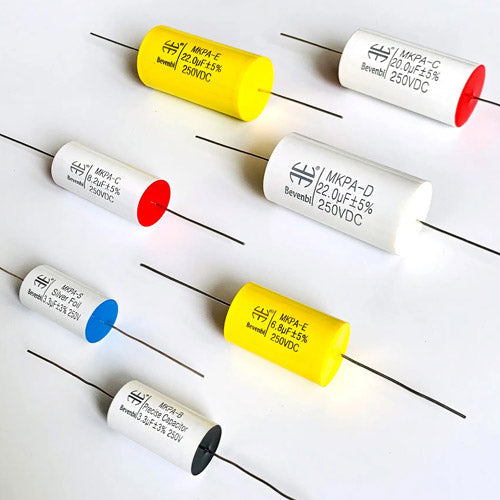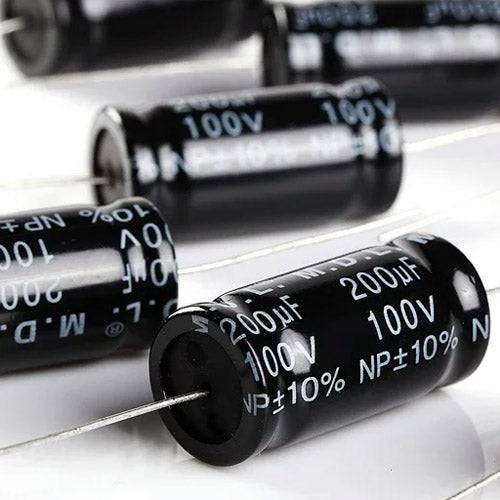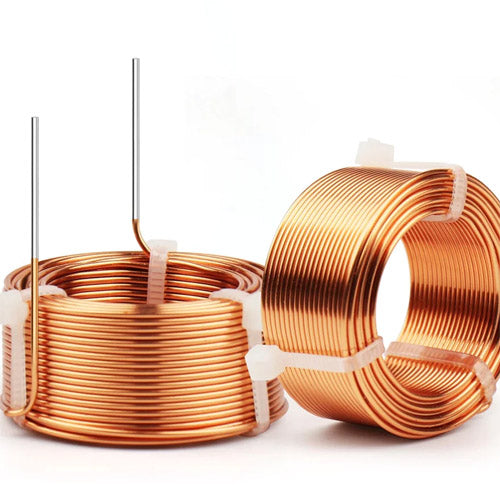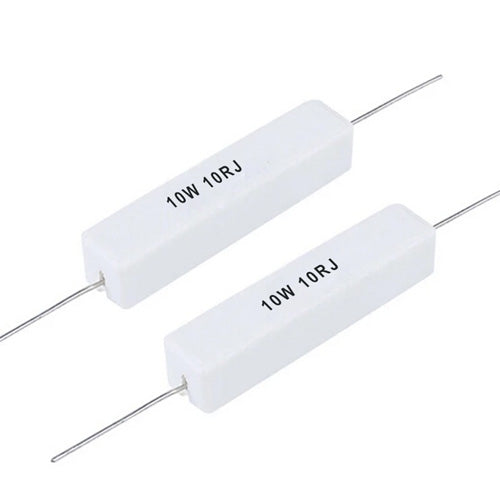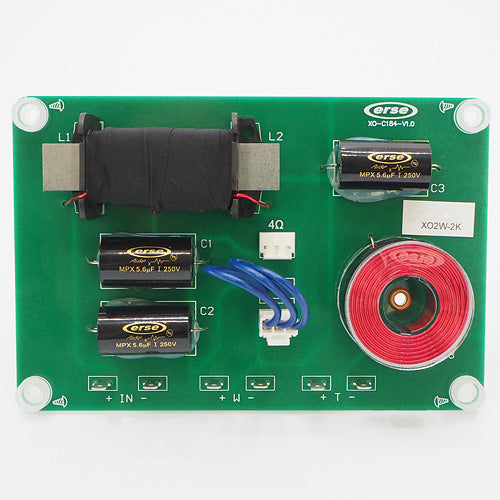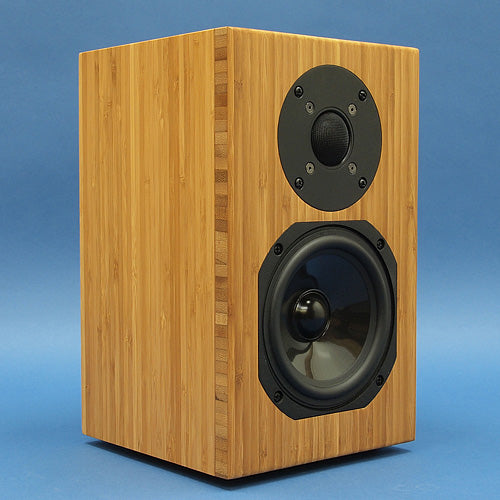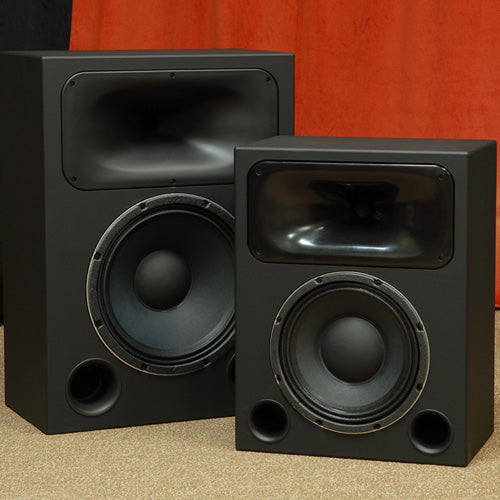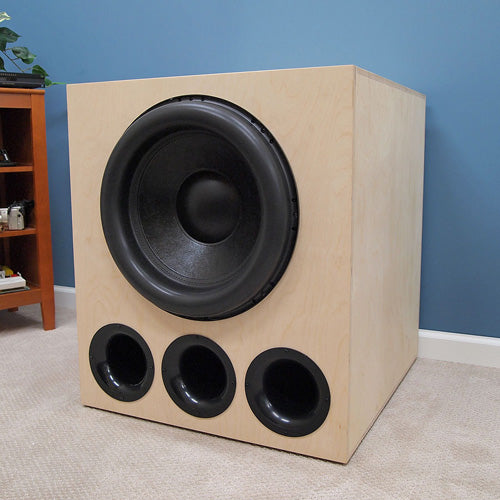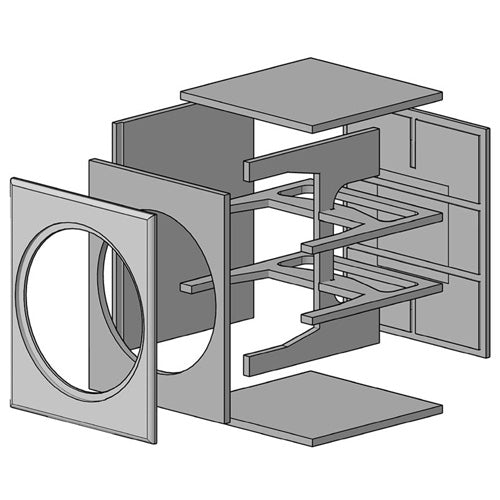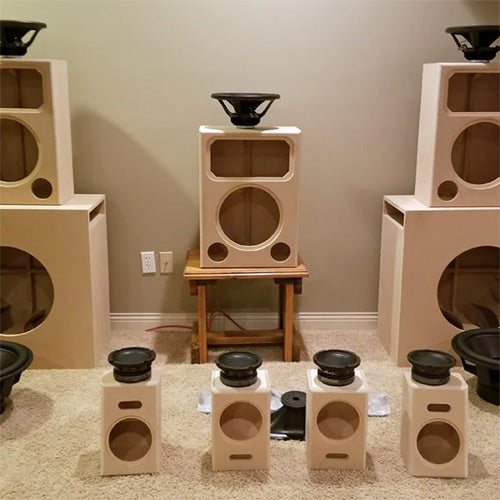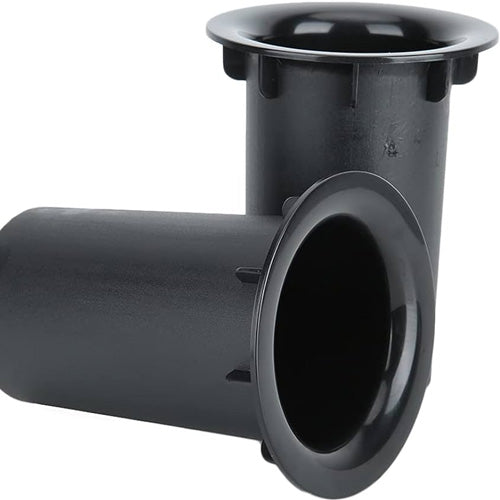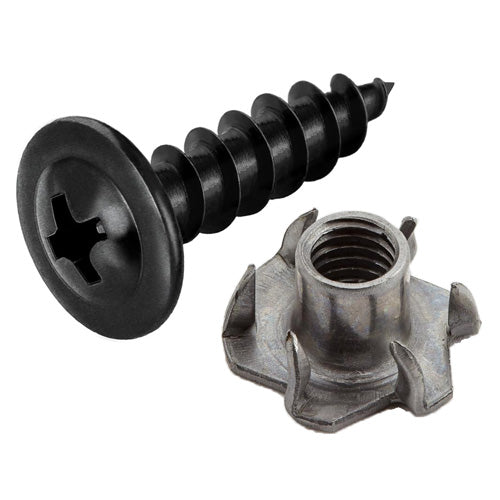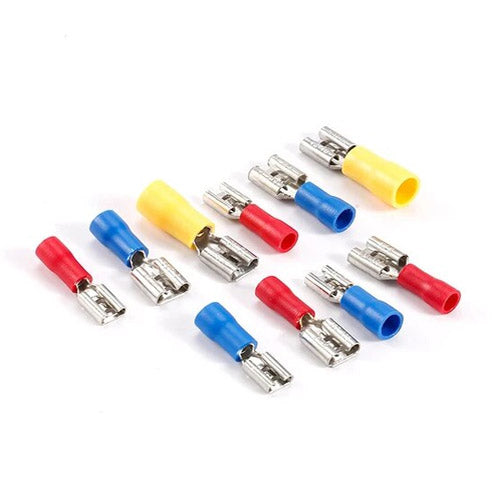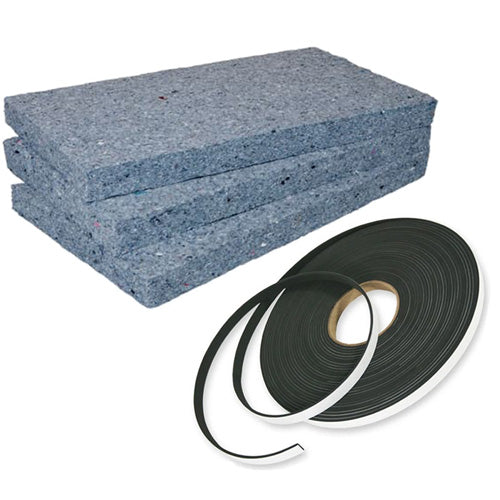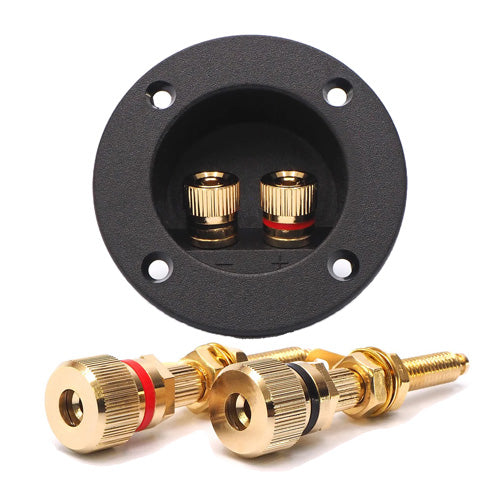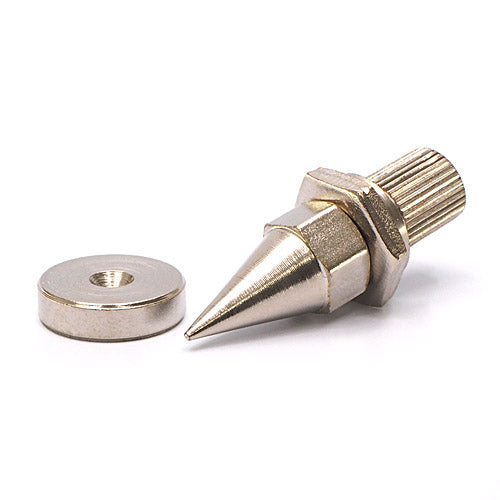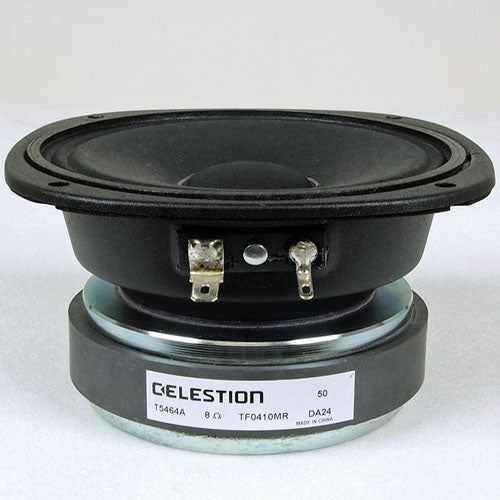The Denovo Audio SEOS-77™ waveguide was designed with the same internal curve as the standard SEOS models but it was made in a square shape. This allows for closer woofer spacing when used in horizontal center channels or narrower cabinets. The curve is identical on all 4 inner flares so it can be rotated without any changes. The SEOS waveguide project was a DIY community effort on the AVS forum that spanned many years with design input from audio professionals and the general public from all around the world. The goal was to produce a waveguide that reduced distortion, improved imaging and soundstage, and created a more natural and immersive listening experience without the typical "horn honk" or harsh sounds from other waveguides.
Helpful Note: Recommended for woofer sizes from 6" - 10". Minimum recommended crossover for a waveguide of this size would be about 1300hz for home use but can be pushed a bit lower for some designs. The finish is high gloss, but these can be painted fairly easy with just about any type of spray paint. The front edges taper down nicely and can surface mounted on your cabinet if you choose not to recess the waveguide. We recommend #8 pan head screws for mounting and to be sure to tighten them down so the screws pull into the recessed holes on the front of the waveguide.
Specifications
|
|
| Brand |
Denovo Audio |
| Model |
SEOS-77™ Gloss |
| Width |
7.25 inches |
| Height |
7.25 inches |
| Depth at intake |
2.25 inches |
| Throat Diameter |
1" (25mm) |
| Driver Mount |
Bolt-On |
| Frequency Response |
1300hz - 20khz |
| Material |
Gloss ABS |
| Weight |
.4 pounds |

Let's Break This Down:
** Waveguides provide directivity control. This means that sound coverage is more uniform over your dedicated listening area so people in different seats get similar sound. In addition and almost more importantly, the directivity control means the ability to minimize early sound reflections off walls, ceilings, and floors. Early reflections are most harmful to human's spatial perception that effects imaging and soundstage ques. Since reflected sounds are a very meaningful portion of what we hear in a small space (room in your house) it is important that the reflected sound have a similar distribution as the direct sound, which is where the constant directivity matters again.
** Lets start with the OS portion of the design and why it's important. There are two offensive qualities that are best to avoid with horns and waveguides. HOM (Higher Order Modes) is one, and that mainly concerns the upper end of the spectrum that the waveguide is operating over, the other is the so-called "horn honk" which is the quite offensive nasally sound when operating a horn below its intended range. Oblate spheroidal profiles create the least HOM. This has been proven mathematically and the empirical results are consistent with the theory. Reducing HOM is highly desirable in a horn/waveguide as it allows the speaker to play louder without being irritating or fatiguing. Waveguides are far less prone to "horn honk" since they do not provide as much acoustic loading, but they allow the driver and waveguide to operate within its recommended passband insuring no honk.
** Now the Super Elliptical part of the SEOS acronym refers to the use of a super elliptical shaped mouth to maximize the mouth area which allows the waveguide to be used lower on the speaker by reducing the height of the waveguide. This has two real benefits. The first is the reduction of the waveguide height lessens the center to center spacing between the waveguide and the woofer allowing for a larger front lobe. This keeps the tonal balance the same when standing up and sitting down. The second aspect is more subtle but meaningful. The "squarish" profile minimizes the on axis dip that is observed in a circular OS waveguide due to mouth reflections. The super elliptical profile eliminates the square edges in a rectangular waveguide helping to eliminate any additional HOMs produced by a not smooth profile.
** Why use a waveguide and compression driver over a dome tweeter? A compression driver with well designed waveguide has the ability to play multiples louder than any dome tweeter while not straining, compressing sound, or wildly distorting. This means louder actually sounds less loud at first, because it is much cleaner with much less distortion. No midsized two way dome tweeter speaker design can keep up with a SEOS waveguide speaker design, neither the mid nor the tweeter can operate that loud cleanly. This may not matter for a tiny room or desktop speaker, but it does matter for a typical dedicated theater room where near reference levels are intended to be reached. We've measured a number of cinemas in the early research phase to find what typical loudness levels were played in commercial theaters. They found it very common to reach 120db c-weighted. The two way dome tweeter designs need not apply.
